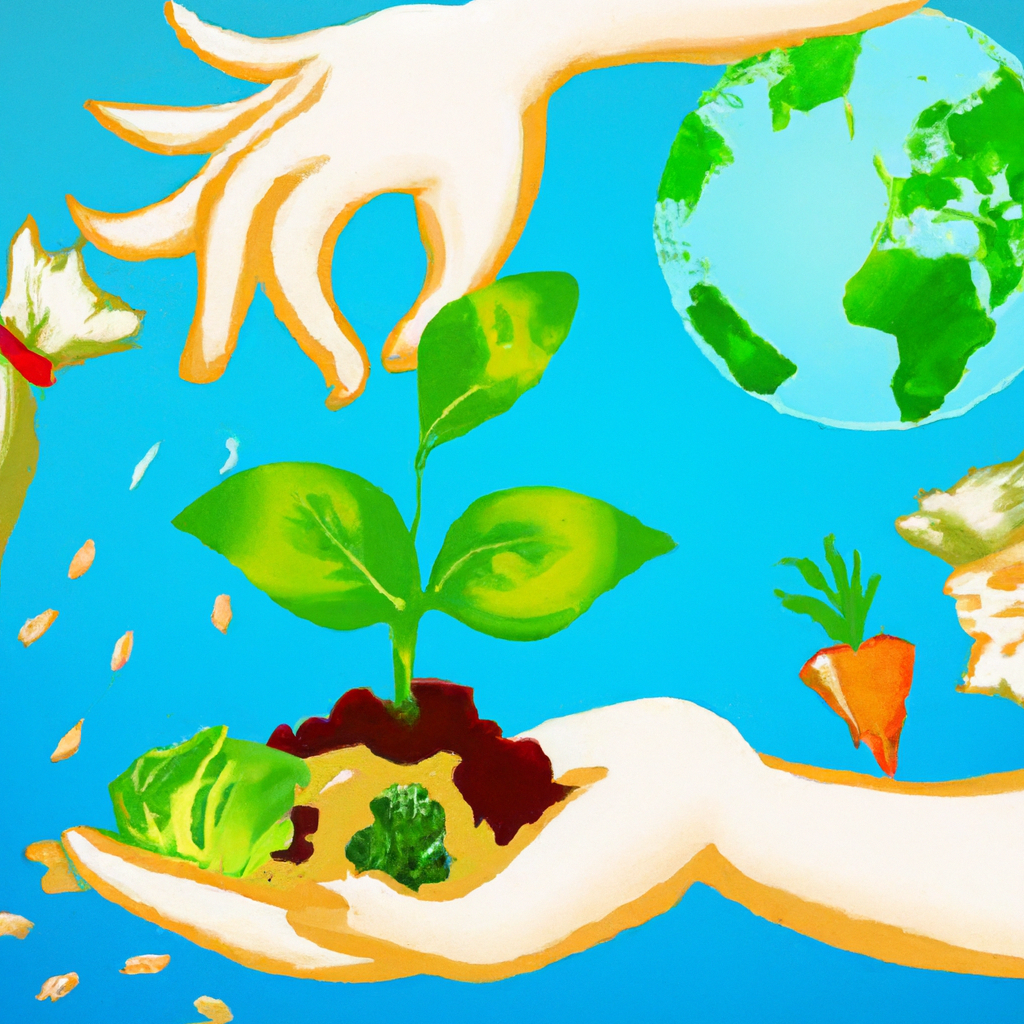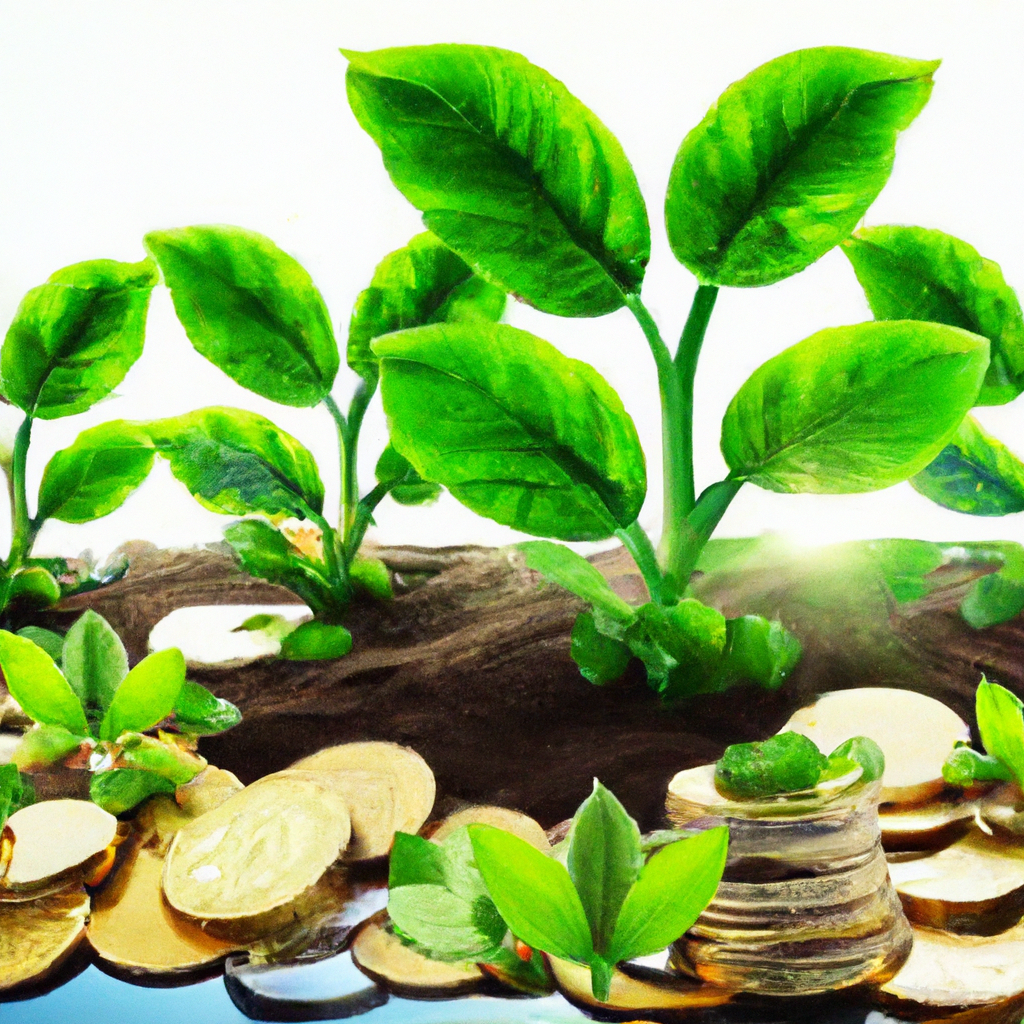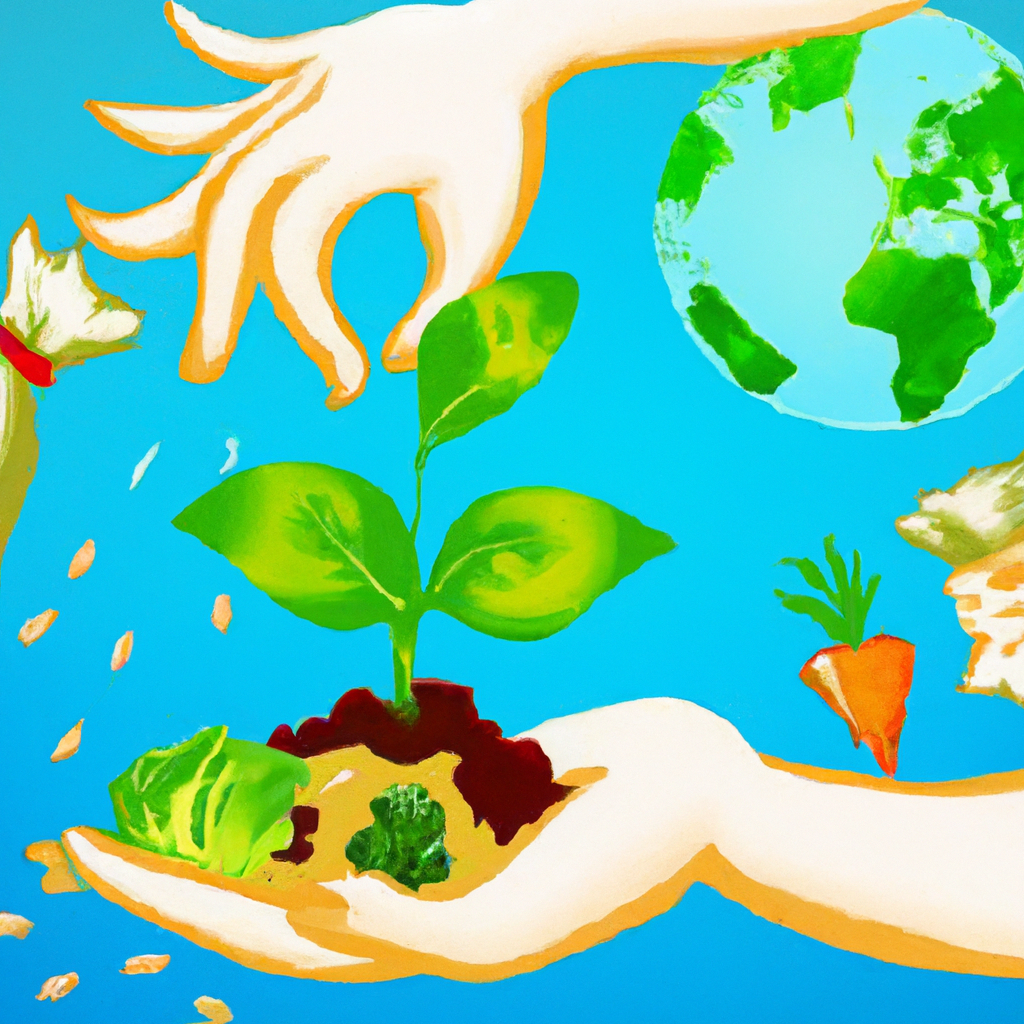In today’s world, being conscious of the environment has become more important than ever. Not only does it help preserve our planet for future generations, but it can also be incredibly beneficial for your wallet. We all want to save money, and what better way to do it than by adopting eco-friendly practices? From using energy-efficient appliances to reducing water wastage, this article explores ten simple yet effective ways to be environmentally friendly while also saving some extra cash. So, let’s embark on a journey towards a greener and more cost-effective lifestyle!

1. Energy-Efficient Lighting Options
Choose LED Bulbs
When it comes to lighting your home, LED bulbs are the way to go. Not only do they last longer than traditional incandescent bulbs, but they also use far less energy. LED bulbs are more energy-efficient because they convert most of the electricity they consume into light, rather than heat. This not only helps the environment but also saves you money on your electricity bill.
Use Natural Light
Another great way to save energy and reduce your electricity usage is by utilizing natural light whenever possible. During the day, make sure to open up your curtains or blinds to let the sunshine in. Not only does natural light create a warm and inviting atmosphere, but it also eliminates the need for artificial lighting.
Install Motion Sensor Lights
Motion sensor lights are an excellent addition to your home’s lighting system. These lights automatically turn on when they detect motion and turn off when the motion is no longer detected. By installing motion sensor lights in areas such as hallways, garages, and outdoor spaces, you can ensure that lights are only on when you need them, saving energy and reducing your electricity bill.
2. Energy-Efficient Appliances
Invest in Energy-Star Rated Appliances
When it’s time to upgrade your appliances, consider investing in energy-star rated models. These appliances are designed to consume less energy, resulting in significant long-term energy savings. Energy-star rated appliances have undergone rigorous testing to ensure that they meet strict energy efficiency guidelines set by the Environmental Protection Agency (EPA). By choosing energy-star rated appliances, you not only help the environment but also save money on your energy bills.
Unplug Unused Electronics and Appliances
Even when turned off, electronics and appliances continue to consume small amounts of energy if left plugged in. This phenomenon is commonly known as “standby power” or “vampire power.” To minimize standby power usage and save energy, make it a habit to unplug electronics and appliances when they are not in use. Alternatively, you can also use power strips with switches to easily turn off multiple devices at once.
3. Water-Saving Techniques
Fix Leaks and Drips
Water leaks and drips not only waste this precious resource but also increase your water bill. It’s essential to regularly check faucets, toilets, and pipes for any leaks or drips and promptly repair them. A steady faucet drip can amount to hundreds of gallons wasted over time, so fixing such leaks can make a significant difference in water conservation and cost savings.
Collect Rainwater for Outdoor Use
Collecting rainwater is a simple and effective way to save water and reduce your water bill, especially for outdoor activities. Install rain barrels or buckets under your gutters and downspouts to capture rainwater. You can then use this collected rainwater for watering your garden, plants, or cleaning outdoor surfaces. It eliminates the need to use treated tap water for non-potable purposes.
Install Low-Flow Showerheads and Faucets
A significant amount of water can be saved by switching to low-flow showerheads and faucets. These fixtures are designed to reduce the amount of water that flows through them while maintaining adequate water pressure. By installing low-flow showerheads and faucets, you can save water with each use, ultimately reducing your water consumption and lowering your water bill.
4. Sustainable Transportation Options
Use Public Transportation or Carpooling
Reduce your carbon footprint by using public transportation or carpooling whenever possible. Opting for public transportation helps reduce traffic congestion, lowers emissions, and conserves energy. Carpooling, on the other hand, allows multiple individuals to share a vehicle, thus reducing the number of cars on the road. By choosing sustainable transportation options, you contribute to a cleaner environment and potentially save on fuel costs.
Ride a Bike or Walk for Short Trips
For short trips within your neighborhood or city, consider riding a bike or walking instead of using a car. Not only does this help reduce your carbon emissions, but it also promotes a healthier lifestyle. Riding a bike or walking is an excellent way to get exercise and explore your surroundings while reducing your reliance on fossil fuels.

5. Recycling and Composting
Set Up a Recycling System at Home
Recycling is one of the easiest and most effective ways to limit waste and conserve resources. Set up a recycling system in your home by placing separate bins or containers for different materials such as paper, plastic, glass, and metal. Make sure to familiarize yourself with the recycling guidelines and regulations in your area to ensure you’re recycling correctly. By recycling, you not only reduce landfill waste but also promote the production of new products from recycled materials.
Compost Kitchen Scraps and Yard Waste
Composting is a fantastic way to divert organic waste from landfills and create nutrient-rich soil. Start composting by collecting kitchen scraps like fruit and vegetable peels, coffee grounds, and eggshells. You can also add yard waste such as leaves, grass clippings, and small branches. Avoid adding meat, dairy, or oily items to your compost pile as these can attract pests. With time, your compost will break down into nutrient-rich soil that can be used in your garden, reducing the need for commercial fertilizers.
6. Reduce Paper Usage
Switch to Digital Documents and Online Communication
Reducing paper usage is not only environmentally friendly but can also help declutter your space. Whenever possible, opt for digital documents and online communication methods. Use email instead of printing and mailing letters, invoices, or documents. Digitalize your bills, receipts, and other important paperwork. By embracing digital technology, you save trees and reduce waste.
Print Double-Sided and Use Scrap Paper for Notes
When printing documents is necessary, make sure to print double-sided to conserve paper. Additionally, reuse single-sided printed paper as scrap paper for notes, shopping lists, or drafts. By embracing these simple habits, you can minimize paper waste and make the most out of each sheet.

7. DIY Cleaning and Personal Care Products
Make Your Own Cleaning Solutions
Many household cleaning products contain harmful chemicals that can impact the environment and your health. Instead, consider making your own cleaning solutions using natural and safe ingredients like vinegar, baking soda, lemon juice, and essential oils. These homemade cleaners are effective, affordable, and eco-friendly, reducing your exposure to toxic substances and plastic waste from store-bought cleaning products.
Use Natural and Chemical-Free Personal Care Products
Similar to cleaning products, many personal care products contain harmful chemicals that can be detrimental to your health and the environment. Opt for natural and chemical-free alternatives such as organic soaps, shampoos, and skincare products. There are many eco-friendly and sustainable options available that are free from harmful ingredients and packaging, helping you reduce your environmental impact while taking care of yourself.
8. Grow Your Own Food
Start a Vegetable Garden
Growing your own food is not only rewarding but also environmentally friendly. Start a vegetable garden in your backyard or even on a balcony or windowsill if you have limited space. By growing your vegetables, you reduce the carbon footprint associated with transportation and packaging. Additionally, homegrown produce tends to be fresher, healthier, and more flavorful.
Grow Herbs and Spices Indoors
Even if you don’t have space for a full vegetable garden, you can still enjoy the benefits of homegrown herbs and spices. Many herbs and spices can be grown indoors in pots or containers. Freshly picked herbs not only add flavor to your meals but also reduce the need for packaged herbs that often come with excessive plastic packaging.

9. Use Sustainable Materials
Choose Sustainable Building Materials
When undertaking any construction or renovation project, consider using sustainable building materials. Look for materials that are certified as eco-friendly, such as bamboo flooring, reclaimed wood, or recycled glass countertops. These materials have less environmental impact and contribute to the conservation of natural resources.
Opt for Eco-Friendly Packaging Materials
In our modern world, packaging waste has become a significant environmental concern. When purchasing products, look for options with minimal packaging or packaging made from recycled or biodegradable materials. You can also use reusable shopping bags or containers to reduce your reliance on disposable packaging.
10. Reduce Water and Electricity Usage
Turn off Lights When Not in Use
It may seem obvious, but turning off lights when you leave a room is a simple habit that can save a considerable amount of energy. Encourage everyone in your household to be mindful of switching off lights when they are not needed. You can also swap traditional incandescent light bulbs with energy-efficient LED bulbs, as mentioned earlier, to further reduce electricity usage.
Take Shorter Showers and Install Water-Saving Toilets
Reducing water consumption in your daily routines can have a positive impact on both the environment and your utility bills. Try to take shorter showers and turn off the faucet while brushing your teeth or lathering your hands. Additionally, consider installing water-saving toilets that use less water per flush. These small changes can add up to significant water savings over time.
By incorporating these eco-friendly practices into your daily life, you can make a positive impact on the environment while saving money. Each individual action may seem small, but together they contribute to a more sustainable and cost-efficient lifestyle. So, embrace these practices and be proud of the positive changes you’re making for the planet and your wallet!


